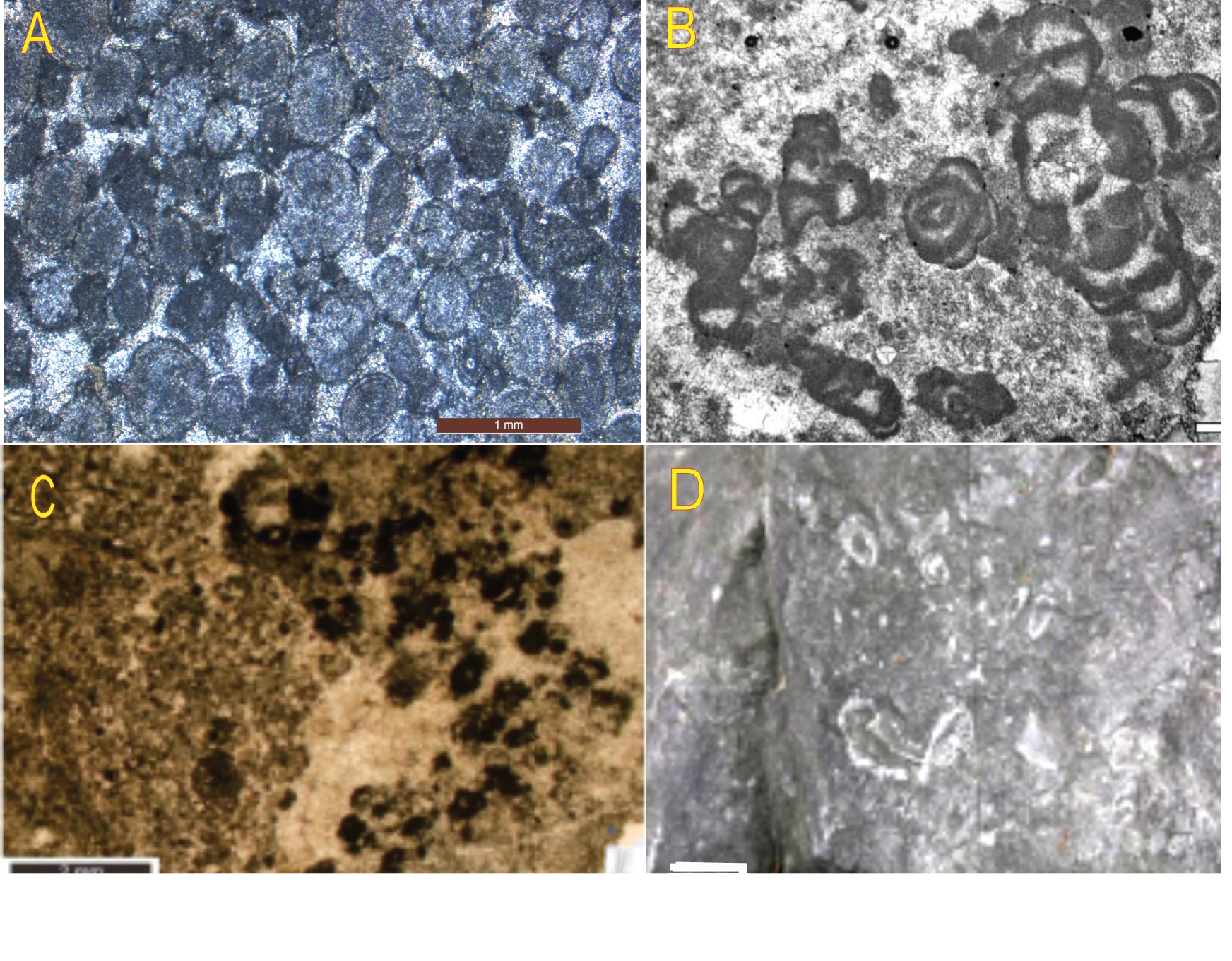Rongxian Fm
Type Locality and Naming
The type section is located at the area near Rongshui Miaozu Zizhixian of Guangxi (= previous Rongxian County), but no type section was given. Due to the poor study of the type section, Wu et al. suggested a section in the Yandong as lectostratotype, which is located at about 15 km southeast of Debao County, western Guangxi. The name was proposed by Tian Qijun (Tien, C. C.) in 1938 in his review paper on “Devonian of China” representing the highest stratigraphical unit of Devonian in Guangxi.
Synonym: Junghsien Fm, Ronghsian Fm. Yin suggested a local name of Dongcun Fm specifically for those Famennian stratigraphic units developed on the restricted platform of Guangxi = Guilin column location.
Lithology and Thickness
Oolitic limestone. This formation is composed of light-gray to grayish-white medium- to thick-bedded bioclastic and detrital packstone and grainstone. It frequently shows very bright color both in the weathered surface and fresh outcrop, which is an indication for very pure limestone with a high Ca content. The oolitic limestone is dominant in the whole carbonate rocks; and the others are partly characterized by the development of algal bindstone, oncolitic limestone, Epiphyton-Renalcis limestone, and peloidal limestone. Locally, it also contains dolomitic limestone and dolomite. The occurrence of carbonate neptunian dykes is one of characters of the Formation. In some sections such as the Nanbiancun of Guilin, the Madao of Xiasi, Dushan of Guizhou (GPS: 107°25’53.92’’E, 25°26’17.39’’N), a bed of massive shelly grainstone consists of densely fragmented brachiopods and crinoids, which displayed tempestite deposit in the uppermost Rongxian Formation. At Miaomen, about 10 km west of the center of Guilin City, the algal-reefs or mounds, 50 m thick, are well-developed in the middle of the Rongxian Formation, which is covered by the fenestral algae limestone of possible Dongcun Fm. Its thickness varies from hundreds meters to more than 1100 m.
[Figure - Photographs showing the main carbonate rocks of Rongxian Formation. A- Thin section of oolitic limestone at Xixiang of western Bama, Guangxi, Bar=1 mm. B-thin section showing the Renalcis (Izella sp.) bindstone in the Liujing, Bar=100 mm (After...). C- Thin section of algae bindstone displaying oolites, intraclast and algae; Dazhai section of Xiashi Town, Dushan County of Guizhou, Bar= 2 mm (After Nie et al., 2019). D- Outcrop of oncolitic limestone in the Rongxian Fm at Dazhai Village of Xiasi Town, Dushan, Guizhou, Bar=2 mm.]
Relationships and Distribution
Lower contact
The lower boundary is not clear because the lithology is transitional relation with underlying Frasnian strata. Only based on the conodont contents the biostratigraphic boundary is recognized. Therefore, in different area it rests conformably on the Liujiang Fm, Baqi Fm. Donggangling Fm (Tungkangling Fm), or unnamed limestone sequences, respectively. Or with disconformable contacts with a basal breccia limestone on the Gubi Fm and Guilin Fm.
Upper contact
Overlain by dark gray thin bedded micritic limestone of early Carboniferous (Duan Fm, Yaoyunling Fm, Yanguan Fm, etc.) but the exact boundary is undefined.
Regional extent
The Rongxian Formation is widely distributed in the entire Guangxi region and southern Hunan.
GeoJSON
Fossils
Megafossils are rare, with only few ostracods, bivalves, solitary corals and peculiar rhynchonellid brachiopods (Dzeduszyckia, Plectorhynchella, etc.). The shell beds in the topmost formation are represented by brachiopod Syringothyris assemblage (Nanbiancun of Guilin and Xiasi of Guizhou). Abundant algae are developed and Palmatolepid conodonts are recorded..
Age
Depositional setting
The sedimentary and fossil features are indicative of an open carbonate platform environment with oolitic and algal barrier bars.
Additional Information
Yin et al. (1992) considered that the lithology of so-called Rongxian Formation in Guilin area is quite different with that in Rongxian type area. In Guilin area, it is characterized by laminated limestone with fenestral structures representing a restricted platform environment, whereas in the type area it represents an open platform or slope depositional condition. Therefore, Yin suggested a name of Dongcun Fm specifically for those Famennian stratigraphic units developed on the restricted platform of Guangxi.
